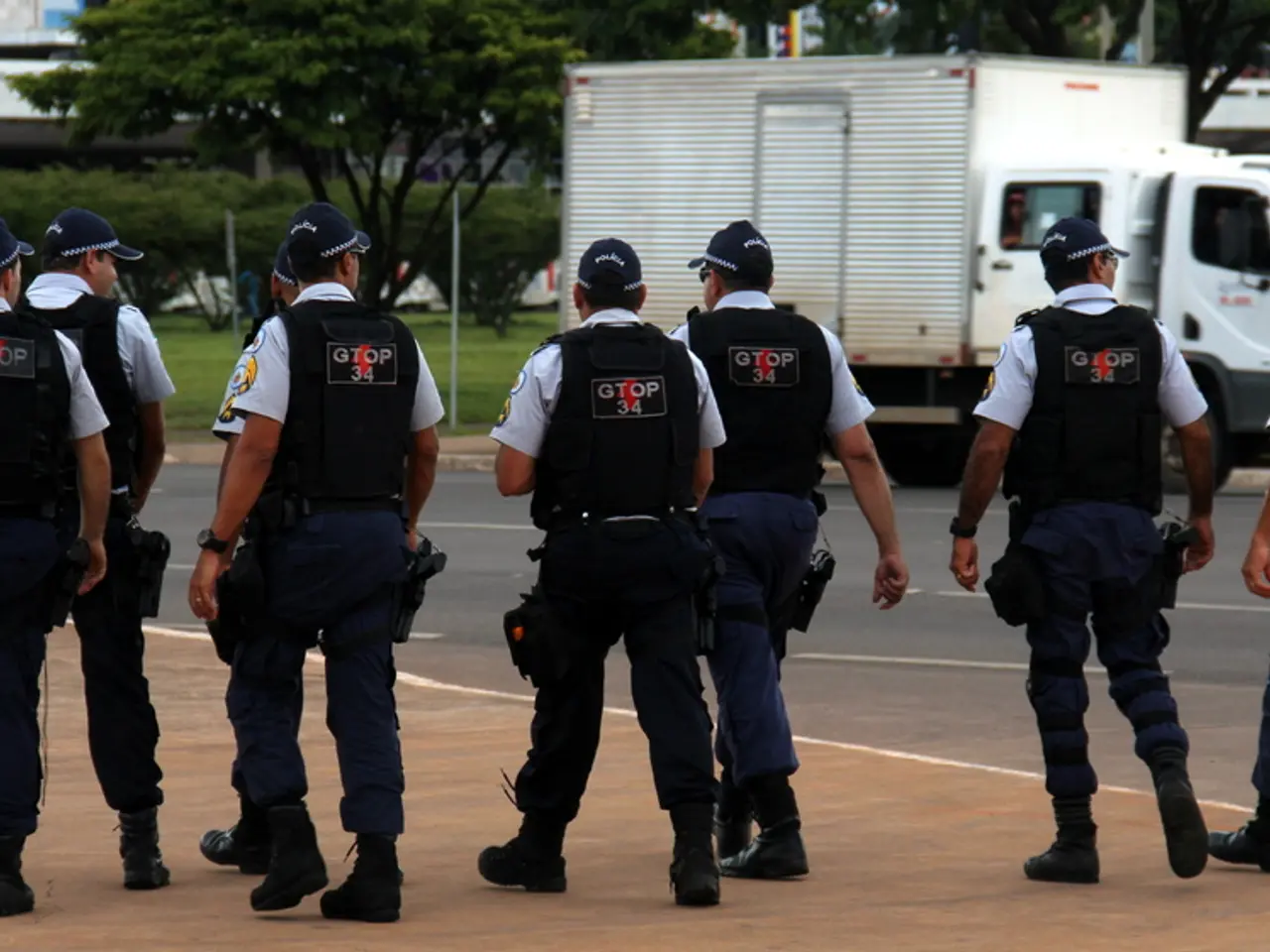Aerial attacks by Israel result in the death of 38 individuals in Gaza, preceding a truce negotiating delegation's journey to Qatar
The Israeli-Palestinian conflict, particularly in the Gaza Strip, has seen a recent escalation with renewed military actions and a severe humanitarian crisis.
The conflict began in October 2023 when Hamas launched attacks on Israel, triggering a series of events that have led to the current situation. Over the past 22 months, more than 57,000 Palestinians have been killed, with over half being women and children, according to Gaza's Hamas-run Health Ministry.
In the latest development, Israel has renewed a major offensive against Hamas, targeting over 130 sites across Gaza. The Israeli military has not commented on individual strikes, but has stated that they targeted Hamas command and control structures, storage facilities, weapons, and launchers.
The violence has resulted in significant civilian casualties. Two houses in Gaza City were hit by Israeli strikes, killing 20 Palestinians and wounding 25 others. In southern Gaza, 18 Palestinians were killed in Muwasi, an area on the Mediterranean coast where thousands of displaced people live in tents.
The United Nations and other international organizations view the figures from Gaza's Hamas-run Health Ministry as the most reliable statistics on conflict casualties. However, it's important to note that the ministry does not differentiate between civilians and combatants.
A ceasefire negotiating team is being sent by Israel to Qatar ahead of Prime Minister Benjamin Netanyahu's White House visit. The proposed truce outlines a 60-day truce during which Hamas would release 10 living and 18 dead hostages, and Israeli forces would withdraw to a buffer zone along Gaza’s borders with Israel and Egypt. Significant aid deliveries would resume, coordinated by United Nations agencies and the Palestinian Red Crescent.
The plan includes negotiations for a permanent ceasefire during this period, but it does not guarantee an end to the war outright, which Hamas demands. Former President Donald Trump personally guarantees Israel’s adherence to the ceasefire and would publicly announce the agreement, intended to reassure Hamas after previous ceasefire breakdowns. Discussions on Palestinian prisoner releases in exchange for hostages remain ongoing.
The proposed ceasefire involves complex aid coordination, with Israel seeking to replace the current UN-led aid distribution system with the American Gaza Humanitarian Foundation. Meanwhile, food shortages in northern Gaza are acute, and Israeli authorities have recently approved sending aid into this area.
Hamas has given a "positive" response to the latest U.S. proposal but seeks guarantees that the initial truce would lead to a total end to the conflict and withdrawal of Israeli troops from Gaza. The full implementation and acceptance of the ceasefire terms by both parties remain uncertain.
Regional tensions have been further aggravated by attacks linked to the conflict, such as the Iran-backed Houthi rebels' announcement that they had launched ballistic missiles targeting Israel's Ben Gurion airport, which were intercepted by Israel's military.
As the conflict continues, the humanitarian situation in Gaza remains critical, with over 2 million Palestinians facing shortages of water, food, and medical care. The Israeli blockade restricting humanitarian aid has created famine-like conditions, prompting criticism from the United Nations and calls from humanitarian groups for increased aid and protection of civilians.
In summary, the conflict in Gaza remains highly volatile with ongoing military operations and a severe humanitarian crisis. The latest ceasefire initiative offers a temporary pause and framework for negotiations but stops short of a permanent peace guarantee, reflecting deep mistrust and complex regional dynamics.
- Despite ongoing negotiations for a ceasefire, the Israeli-Palestinian conflict in the Gaza Strip persists, creating a critical humanitarian crisis for over 2 million Palestinians, facing shortages of water, food, and medical care.
- The conflict, encompassing war-and-conflicts, politics, and general-news, has resulted in significant casualties, with more than 57,000 Palestinians killed over the past 22 months, according to Gaza's Hamas-run Health Ministry.
- The even wider spectrum of issues surrounding the conflict extends to crime-and-justice, as discussions on Palestinian prisoner releases in exchange for hostages remain ongoing, while sports-betting is less of a concern in the region amidst the ongoing conflict and humanitarian crisis.








